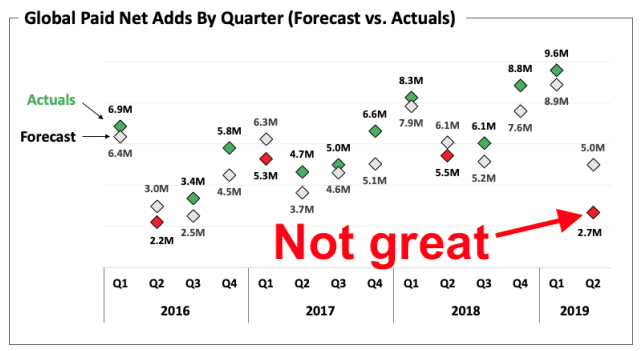via medium:
Netflix spends $15 Billion per year on Original Content, and pays another $13 Billion each year to license content from other studios. Other expenditures include technology and marketing, each costing billions per year.
With revenues only recently reaching $16 billion, Netflix is forced to borrow heavily to produce original content, and maintain their dominant position in the US streaming market.
To date, they’ve accumulated $21.516 billion in debt and have $5.703 billion in shareholder liabilities on their balance sheet.
And to be clear, the accumulation of debt coincides with the company’s decision to begin production of original content in 2013. Their roughly $27b in debt is very close to the $28b spent on Original Content.
But what has changed is the amount Netflix borrows to fund the production of this content. In 2013, $2b per year was a pretty minor expenditure. But today, a $10b spend on original content is barely offset by current revenues on that content.
Up until now, Netflix has pointed to favorable subscriber numbers to justify their potential future value. Last year, Netflix projected they would add 300,000 new US subscribers in Q1 2019. But in reality, they lost 130,000 US subscribers (nearly half that amount).

But is this really a problem for Netflix? CEO Reed Hastings has previously predicted subscription counts would peak near 60 million in the US. And at 60.1m current US subscribers, that’s pretty darn exact.
In fact, Netflix began this borrowing binge with a prediction, in 2013, with the release of House of Cards, that competition for licensing would only heat up. And this is a prediction which has proven correct. And if you look at long-term trends, they have met this challenge by reducing their dependence on licensed content from 100% in 2013 to about 45% in 2019.